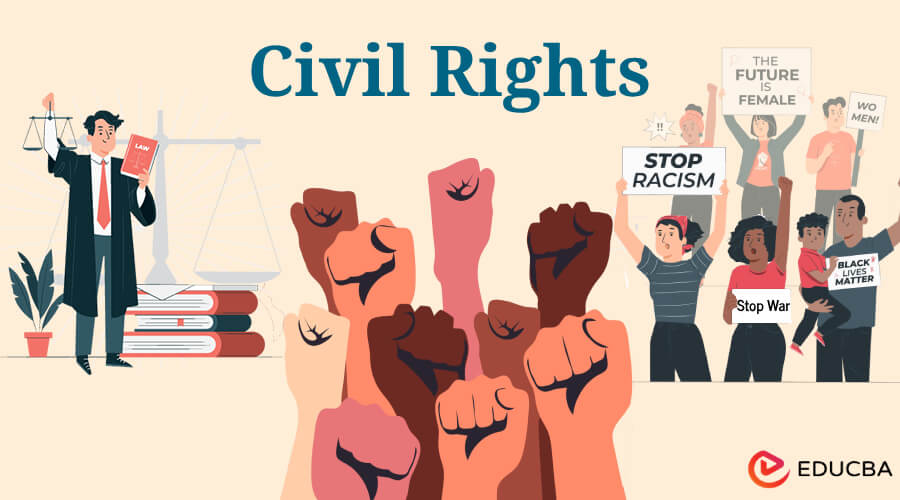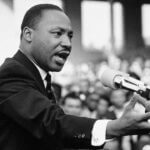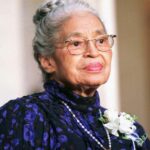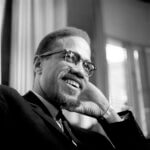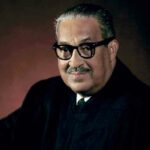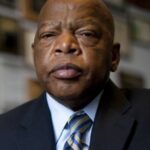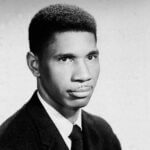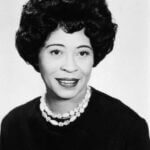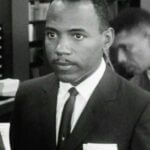Introduction to Civil Rights
Civil rights, an essential facet of democratic societies, represent the bedrock upon which principles of equality, justice, and freedom are built. Rooted in the belief that every individual is entitled to fair treatment and opportunities regardless of their race, gender, or background, the concept of civil rights has undergone a profound evolution throughout history. From the abolitionist movements of the 19th century to the transformative Civil Rights Movement of the 20th century, the struggle for civil rights has shaped the societal landscape and defined the quest for a more inclusive and equitable world. This essay explores the historical development, legal foundations, key figures, challenges, and contemporary issues surrounding civil rights, providing a comprehensive analysis of a topic that remains pivotal in the ongoing narrative of social progress. As we reflect on the achievements and setbacks of the past, it is crucial to examine the current state of civil rights and consider the path forward to ensure a society where the principles of justice and equality are fully realized.
Significance of Civil Rights
The significance of civil rights in contemporary society remains paramount, serving as a cornerstone for democratic principles and societal progress. In the 21st century, civil rights are crucial for several reasons:
- Equality and Justice: It ensures that all individuals, regardless of race, gender, ethnicity, or other characteristics, have equal access to opportunities and are treated justly within the legal system.
- Social Cohesion: Upholding civil rights fosters a sense of unity and social cohesion by promoting inclusivity and diversity. It encourages recognizing and celebrating differences rather than fostering discrimination or exclusion.
- Individual Empowerment: It empowers individuals to participate fully in civic life. This empowerment extends to political participation, education, employment, and other spheres, allowing individuals to contribute meaningfully to society.
- Rule of Law: Civil rights are intertwined with the rule of law, ensuring that legal frameworks protect individuals from discrimination and arbitrary actions by authorities. This contributes to a stable and just society.
- Global Human Rights Standards: Civil rights adhere to international human rights standards, reinforcing a commitment to basic freedoms and protections for all individuals.
- Social Progress: The ongoing pursuit of civil rights reflects a commitment to social progress and improving societal norms. It challenges discriminatory practices and encourages positive change.
Historical Development
The historical development of civil rights is a complex narrative marked by struggles, triumphs, and transformative moments that have shaped the societal landscape over time. This development can be traced through key periods and movements:
- Abolitionist Movement (19th Century): The historical development of civil rights traces back to the abolitionist movement, which sought to eradicate slavery. Important people like Harriet Tubman and Frederick Douglass were instrumental in promoting the liberation and rights of those who were held as slaves.
- Reconstruction Era (1865-1877): Reconstruction efforts after the Civil War focused on rebuilding Southern governments and granting civil rights to recently freed slaves. The 13th, 14th, and 15th Amendments were crucial in abolishing slavery, granting citizenship, and securing voting rights for African Americans.
- Jim Crow Era (Late 19th to Mid-20th Century): The rise of Jim Crow laws led to widespread segregation, disenfranchisement, and racial discrimination in the Southern United States. This era marked a significant setback for civil rights, prompting resistance and the formation of early civil rights organizations.
- Civil Rights Movement (1950s-1960s): The mid-20th Century witnessed the Civil Rights Movement, a transformative period marked by protests, marches, and legal challenges. The Montgomery Bus Boycott, the March on Washington, and the Brown v. Board of Education decision are significant moments in the civil rights struggle. Leaders like Martin Luther King Jr. advocated nonviolent resistance to dismantle segregation and secure equal rights.
- Legislation (1960s): The Voting Rights Act of 1965 and the Civil Rights Act of 1964 played a key role in removing legislative restrictions on equality. These laws aimed to end discrimination based on race, color, religion, sex, or national origin, marking a legislative triumph for the civil rights cause.
Legal Framework for Civil Rights
Constitutional Amendments:
- 13th Amendment (1865): Abolished slavery, marking a foundational step toward recognizing the civil rights of all individuals.
- 14th Amendment (1868): Regardless of color, all people born or naturalized in the US are granted citizenship and equal legal protection.
- 15th Amendment (1870) prohibited racial discrimination in denying voting rights, expanding civil rights to encompass political involvement.
Civil Rights Act of 1964:
- Prohibits discrimination in employment, public accommodations, and federally funded programs based on race, color, religion, sex, or national origin. The goal of this historic law was to end segregation and advance equality.
Voting Rights Act of 1965:
- It addressed discriminatory voting practices, particularly in the Southern states, by eliminating barriers that prevented African Americans from exercising their right to vote.
Fair Housing Act of 1968:
- Aiming to end segregation and advance equality, this historic law forbids discrimination based on race, color, religion, sex, or national origin in jobs, public facilities, and federally financed programs.
Affirmative Action:
- Executive orders and court decisions promoting affirmative action aim to address historical and systemic discrimination by requiring institutions to consider underrepresented candidates in employment and education actively.
Americans with Disabilities Act (ADA) of 1990:
- Prohibits discrimination based on disability, ensuring equal access to employment, public services, and accommodations for individuals with disabilities.
LGBTQ+ Rights:
- Legal advancements, including the Supreme Court’s decision in Obergefell v. Hodges (2015), recognize the civil rights of the LGBTQ+ community, particularly in the context of marriage equality.
Key Figures in the Civil Rights Movement
- Martin Luther King Jr.: King, a key player in the Civil Rights Movement, promoted equality and nonviolent resistance. His leadership in the Montgomery Bus Boycott, March on Washington, and other pivotal events earned him a Nobel Peace Prize.
- Rosa Parks: Parks, frequently referred to as the “mother of the Civil Rights Movement,” ignited the Montgomery Bus Boycott and spread the anti-segregation campaign after she refused to give up her bus seat to a white neighbor in Montgomery.
- Malcolm X: A prominent voice for Black empowerment, Malcolm X urged self-defense and liberation. His leadership in the Nation of Islam and later advocacy for global human rights impacted the Civil Rights Movement.
- Thurgood Marshall: Marshall served as the first African American justice on the Supreme Court and was a significant legal mind. His persuasive argument in the landmark Brown v. Board of Education case resulted in integrating public schools.
- John Lewis: Lewis devoted his life to civil rights action and eventually served as a U.S. Congressman. He was one of the main organizers of the March on Washington and a leader in the Student Nonviolent Coordinating Committee.
- Medgar Evers: An NAACP field secretary, Evers worked tirelessly to register African American voters and challenge segregation. His assassination in 1963 heightened awareness of the dangers activists faced.
- Daisy Bates: A journalist and activist, Bates played a crucial role in integrating Central High School in Little Rock, Arkansas. She mentored the “Little Rock Nine” and fought against racial injustice.
- James Meredith: The enrollment of James Meredith, the first African American student at the University of Mississippi, was a pivotal moment in the fight for desegregation, which was only achieved through federal intervention.
- Fannie Lou Hamer: leader in the Mississippi Freedom Democratic Party, Hamer worked for voting rights and participated in the Freedom Summer. Her powerful speeches brought attention to the challenges faced by African American voters.
- Cesar Chavez: While primarily associated with the labor movement, Chavez’s activism extended to civil rights. He co-founded the United Farm Workers and fought for farmworkers’ rights, many of whom were Hispanic and faced discrimination.
Challenges and Setbacks
- Segregation and Jim Crow Laws: Widespread segregation in public facilities, education, and housing persisted, especially in the Southern United States, due to Jim Crow laws, which enforced racial separation and perpetuated systemic discrimination.
- Violence and Intimidation: Civil rights activists faced violence and intimidation, often at the hands of white supremacist groups. Events like the bombings of churches and the murders of activists such as Medgar Evers and the Freedom Summer volunteers underscored the dangers involved.
- Resistance to Desegregation: Many communities resisted court-ordered desegregation, leading to confrontations such as the Little Rock Nine’s struggle to integrate Central High School and the violent opposition to school desegregation in places like Birmingham, Alabama.
- Limited Voting Rights: By using strategies like literacy tests, poll taxes, and intimidation, African Americans were methodically denied the ability to exercise their constitutional right to vote.
- Redlining and Economic Disparities: Discriminatory housing policies, including redlining, perpetuated economic disparities by limiting access to loans and quality housing for minority communities, contributing to long-term economic challenges.
- Assassinations and Targeted Violence: The movement suffered substantial setbacks and a leadership vacuum due to the assassinations of key figures like Malcolm X, Medgar Evers, and Martin Luther King Jr., leading to profound grief and loss of leadership.
- Limited Federal Support: Despite some federal interventions, there were instances where the federal government hesitated to fully support civil rights initiatives, causing delays in dismantling discriminatory practices and laws.
- Racially Biased Criminal Justice System: The criminal justice system exhibited racial bias, leading to unjust arrests, convictions, and sentencing. This perpetuated a cycle of inequality and systemic discrimination.
- Backlash and White Resistance: The Civil Rights Movement faced significant resistance from segments of the white population who resisted change, leading to clashes and contributing to the challenges of achieving widespread social transformation.
- Fragmentation within the Movement: Ideological and strategic differences, such as the divergence between Martin Luther King Jr.’s philosophy of nonviolent resistance and Malcolm X’s advocacy for self-defense, sometimes created internal challenges.
Evolving Notions of Civil Rights
- Women’s Rights Movement: Expanded civil rights to include gender equality, advocating for equal opportunities in education, employment, and political representation. Landmark achievements include the Women’s Suffrage Movement and the passage of the Equal Pay Act.
- Rights Movement: Broadened the understanding of civil rights to encompass sexual orientation and gender identity, seeking an end to discrimination and advocating for legal recognition of same-sex relationships. Milestones include the decriminalization of homosexuality and the legalization of same-sex marriage.
- Disability Rights Movement: Redefined civil rights to include individuals with disabilities, focusing on equal access to public facilities, employment, and education. For this movement, the 1990 passage of the Americans with Disabilities Act (ADA) was a revolutionary legislative win.
- Intersectionality: Acknowledge the intersectionality of social identities and emphasize the need for civil rights initiatives to consider individuals’ multiple marginalized identities.
- Environmental Justice: Extended civil rights considerations to include environmental issues, emphasizing that marginalized communities often bear a disproportionate burden of environmental hazards. Advocates work to ensure fair access to clean air, water, and a healthy environment.
- Immigrant Rights Movement: Advanced the understanding of civil rights to encompass immigrants, advocating for fair treatment, protection from discrimination, and comprehensive immigration reform. DREAM Act initiatives aim to provide pathways to citizenship for undocumented individuals brought to the country as children.
- Digital Rights and Privacy: Recognized the importance of civil rights in the digital age, addressing issues such as online privacy, data protection, and equal access to digital resources. Advocates work to ensure that technology does not exacerbate existing societal inequalities.
- Global Human Rights: Expanded the scope of civil rights beyond national borders, recognizing that human rights are universal. International efforts focus on addressing human rights violations worldwide and promoting a global commitment to justice and equality.
Current Issues in Civil Rights
- Police Brutality and Racial Profiling: Ongoing concerns about police misconduct and racial profiling highlight systemic issues, prompting calls for police reform and increased accountability. High-profile cases have ignited movements advocating for justice and ending racial injustice in law enforcement.
- Voting Rights Challenges: Efforts to restrict voting rights, including voter ID laws and gerrymandering, disproportionately impact minority communities. Advocates work to protect and expand access to the ballot, addressing threats to democratic participation.
- Economic Disparities: Persistent economic inequalities, particularly along racial lines, underscore the need to address disparities in employment, wealth accumulation, and access to educational and economic opportunities.
- Criminal Justice Reform: Calls for comprehensive criminal justice reform seek to address issues such as mass incarceration, sentencing disparities, and the school-to-prison pipeline. The focus is on creating a fair and equitable system that rehabilitates rather than perpetuates cycles of inequality.
- LGBTQ+ Rights and Equality: Ongoing challenges include discrimination against LGBTQ+ individuals in employment, housing, and public services. Advocacy efforts aim to secure comprehensive legal protections and foster greater social acceptance.
- Immigrant Rights and Xenophobia: Anti-immigrant sentiment and policies impact the rights and well-being of immigrant communities. Civil rights advocates work to challenge discriminatory practices, protect the rights of undocumented individuals, and promote comprehensive immigration reform.
- Disability Rights and Accessibility: Accessibility challenges persist in transportation, public facilities, and digital spaces. Advocates push for greater inclusivity, reasonable accommodations, and the elimination of barriers that hinder full participation for individuals with disabilities.
- Environmental Justice: Marginalized communities continue to bear the brunt of environmental hazards and the impacts of climate change. Efforts focus on ensuring that environmental policies prioritize justice, equity, and the protection of vulnerable populations.
Global Perspective on Civil Rights
- Universal Declaration of Human Rights: The 1948 UDHR, endorsed by the UN, states that everyone has fundamental civil rights, regardless of gender, race, or religion.
- International Conventions and Treaties: The worldwide protection of civil rights is emphasized by several accords, including ICCPR. Ratified by many nations, these treaties set standards for individual freedoms, fair trial rights, and freedom from discrimination.
- Human Rights Organizations: Global organizations like Amnesty International and Human Rights Watch work to monitor and address civil rights abuses worldwide. They advocate for justice, expose human rights violations, and promote accountability on a global scale.
- Addressing Discrimination and Xenophobia: Global efforts combat discrimination and xenophobia by promoting inclusivity and tolerance. Initiatives aim to challenge stereotypes, address hate crimes, and create peaceful environments where diverse populations can coexist.
- Refugee and Migrant Rights: Civil rights in a global context include the protection of refugees and migrants. Advocacy focuses on ensuring their right to seek asylum, protection from discrimination, and access to essential services.
- International Criminal Court (ICC): The ICC plays a crucial role in addressing human rights violations by prosecuting individuals for crimes such as genocide, war crimes, and crimes against humanity, emphasizing the global pursuit of justice.
- Technology and Digital Rights: The global conversation on civil rights extends to the digital realm, addressing issues like online privacy, digital surveillance, and freedom of expression. International efforts aim to establish norms that protect individuals in the digital age.
- Global Movements for Justice: Global resonance has been achieved by grassroots movements like #MeToo and #BlackLivesMatter, which have promoted cross-border solidarity and shown how interwoven civil rights fights are.
- Economic Justice and Global Inequality: Civil rights advocacy also addresses economic disparities on a global scale. Efforts focus on fair trade, debt relief, and sustainable development to reduce global poverty and promote economic justice.
- Indigenous Rights: There is a common commitment on a global scale to acknowledge indigenous peoples’ rights. International accords like the UN Declaration on the Rights of Indigenous Peoples safeguard these groups’ cultural, social, and economic rights.
Achievements and Progress
- Desegregation of Public Facilities: Landmark’s achievements include the desegregation of schools, transportation, and public spaces, challenging institutionalized racism, and fostering a more inclusive society.
- Civil Rights Legislation: Accomplishments include the decriminalization of homosexuality, the legalization of same-sex marriage in some countries, and the rising worldwide acceptance and protection of LGBTQ+ rights.
- Election of Barack Obama: Barack Obama’s historic election as the first African American President in 2008 symbolized a significant breakthrough, reflecting progress in breaking racial barriers and promoting inclusivity.
- Advancements in LGBTQ+ Rights: The decriminalization of homosexuality, the legalization of same-sex unions in several nations, and the greater acceptance and defense of LGBTQ+ rights throughout the world are among the accomplishments.
- Global Human Rights Advocacy: Growing global awareness and advocacy for human rights, evident in the work of international organizations, legal frameworks, and social movements, have contributed to positive changes and increased accountability for human rights violations.
- Women’s Rights Milestones: Achievements in women’s rights include advancements in reproductive rights, increased representation in leadership roles, and the #MeToo movement, sparking conversations about gender-based discrimination and harassment.
- Technological Progress and Activism: The digital age has empowered civil rights activism, providing a platform for marginalized voices, raising awareness of injustices, and facilitating global movements for social change.
- Economic Opportunities: With affirmative action, anti-discrimination laws, and initiatives to advance equal opportunities in work and education, progress has been achieved in reducing economic disparities.
- Increased Diversity in Media and Culture: Positive changes in media representation and cultural narratives have contributed to a more inclusive portrayal of diverse communities, challenging stereotypes and fostering understanding.
- Social and Cultural Impact: This Movement’s impact extends beyond legal victories, influencing societal norms and attitudes and promoting values emphasizing equality, justice, and human dignity. This cultural shift is an enduring achievement in the pursuit of civil rights.
Conclusion
The journey of civil rights is a testament to the resilience of individuals and movements striving for justice and equality. From historic milestones like desegregation to contemporary challenges, the evolving landscape reflects progress yet underscores the ongoing work needed. Achievements in legislation, diverse movements, and global advocacy demonstrate positive change while acknowledging persistent issues prompts a continued commitment to fostering a truly inclusive and just society. The legacy of civil rights serves as a guiding light, inspiring collective efforts to overcome obstacles and shape a future where the principles of fairness, dignity, and human rights are universally upheld.
